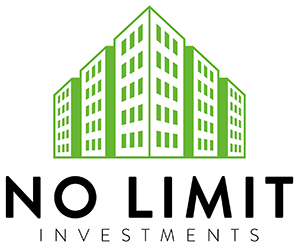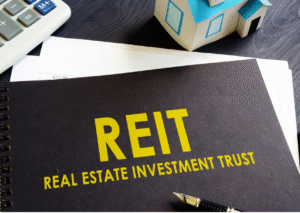What Makes Real Estate Investment an Effective Wealth-Building Strategy?
Real estate investment has long been considered one of the most reliable ways to build wealth and financial stability. Unlike other asset classes such as stocks or bonds, real estate provides tangible value, an asset you can see, manage, and leverage for long-term growth. It offers multiple income streams through rental income, appreciation, and tax advantages, making it a cornerstone of financial independence for many investors (U.S. Department of Housing and Urban Development).
Building wealth through real estate isn’t about luck. It’s about following proven tips, staying disciplined, and making strategic financing choices that match your personal goals. Whether you want to fix and flip properties, buy and hold rentals, or use refinancing to grow your portfolio, having the right knowledge is crucial.
Why Is Understanding Financing the Foundation of a Successful Investment?
One of the most common challenges for real estate investors is access to financing. Capital is the lifeline of any investment plan, but many investors underestimate the importance of securing the right type of loan. Choosing the wrong financing structure can reduce profitability, limit growth, and increase financial stress.
Here are some financing solutions that can align with different strategies:
- Fix & Flip Loans – Designed for short-term projects, they give investors quick access to capital for renovations and resales.
- Buy & Hold Mortgages – Long-term loans that let you maintain and profit from rental properties.
- BRRRR Financing – Supports the “Buy, Rehab, Rent, Refinance, Repeat” method for scaling portfolios.
- Cash Out Refinance – Allows investors to tap into property equity for new deals without selling existing assets.
- DSCR Loans – Debt Service Coverage Ratio loans qualify properties based on rental income rather than personal income.
- New Construction Loans – Tailored for ground-up development projects.
By understanding which financing option suits your investment style, you set the stage for long-term success. Access to real estate financing solutions from a trusted partner can help ensure your strategy stays sustainable and scalable.
What Are the Key Real Estate Investment Tips for Beginners?
Starting in real estate can feel overwhelming, but focusing on a few core principles makes the process manageable. Beginners should start with these tips:
- Educate Yourself First – Learn about local markets, property laws, and financing structures before committing money.
- Start Small – A single-family rental or a small fix-and-flip is easier to manage than a multi-unit building.
- Leverage Financing – Use smart financing solutions like Buy & Hold Mortgages or DSCR Loans to reduce personal risk.
- Run the Numbers – Always calculate potential rental income, expenses, and loan obligations before purchasing.
- Build a Network – Work with lenders, contractors, and real estate professionals who understand investor-friendly strategies.
With these basics, new investors can avoid common pitfalls while creating a foundation for future expansion.
How Can Fix & Flip Strategies Be Applied Successfully?
Fix & Flip investing focuses on purchasing undervalued properties, renovating them, and selling them for profit. While the concept seems simple, success depends on careful execution.
Key tips for successful flips include:
- Identify the Right Property – Target homes in high-demand areas with strong resale potential.
- Budget Wisely – Account for both expected and unexpected renovation costs.
- Time the Market – Selling in the right season can significantly impact your returns.
- Use Fix & Flip Loans – Short-term financing provides the capital to purchase and renovate quickly.
This strategy can generate high profits in a short time, but it carries risks. Strong market research, disciplined budgeting, and proper financing are essential to avoid costly mistakes.
What Role Does the Buy & Hold Strategy Play in Long-Term Wealth?
Unlike Fix & Flip, the Buy & Hold strategy focuses on generating passive income and long-term appreciation. Investors purchase rental properties, rent them out, and hold them for years to benefit from rising values.
Benefits of Buy & Hold include:
- Steady Cash Flow – Rental income can cover mortgage payments and provide ongoing income.
- Appreciation – Over time, property values tend to rise, adding to your wealth.
- Tax Advantages – Depreciation and other deductions can reduce taxable income.
- Portfolio Growth – Using Buy & Hold Mortgages allows you to expand without exhausting your capital.
For many investors, this strategy is the backbone of financial independence. It provides security, resilience, and scalability in ways that short-term strategies cannot.
How Does the BRRRR Strategy Accelerate Portfolio Expansion?
The BRRRR method—Buy, Rehab, Rent, Refinance, Repeat—is one of the most powerful ways to scale a real estate portfolio.
Here’s how it works:
- Buy an undervalued property with growth potential.
- Rehab it to increase value and rental appeal.
- Rent it out to generate consistent income.
- Refinance with a loan such as BRRRR Financing to recoup your initial investment.
- Repeat the process to grow your portfolio without tying up all your capital.
This method maximizes equity growth and allows investors to recycle capital efficiently. With access to specialized financing, such as BRRRR Financing or Cash Out Refinance, investors can rapidly expand without continually raising new funds.
Why Is Cash Out Refinancing an Important Growth Tool?
Cash Out Refinancing allows investors to leverage equity in their existing properties. Instead of selling, you refinance and withdraw cash to reinvest in new opportunities.
Advantages include:
- Unlocks Equity Without Selling – Continue earning rental income while using your equity for new deals.
- Funds Expansion – Use cash for Fix & Flip projects, Buy & Hold properties, or even ground-up construction.
- Increases Portfolio Value – Strategic reinvestment leads to faster portfolio growth.
This strategy works best when paired with solid financial planning and reliable lenders who understand real estate investors’ needs.
How Can DSCR Loans Simplify Real Estate Financing?
Traditional loans often require extensive documentation, including W-2s, tax returns, and personal income verification. DSCR Loans, however, evaluate the property’s income potential instead of the borrower’s personal finances.
Benefits of DSCR Loans include:
- No Personal Income Requirements – Approval is based on the property’s rental income.
- Faster Approval Process – Less paperwork speeds up deal closing.
- Investor-Friendly – Designed for non-owner occupied properties.
This makes DSCR Loans one of the most attractive financing options for investors who prioritize property performance over personal financial history.
When Should You Consider New Construction Loans?
For investors aiming to build rather than buy, New Construction Loans offer a solution. They provide capital to develop new properties, from single-family homes to multi-unit complexes.
Why they matter:
- Flexibility – Finance land purchase, construction, and sometimes even conversion into a permanent mortgage.
- Market Advantage – Build properties that meet specific rental or resale demands.
- High ROI Potential – New builds often command higher rents and property values.
This strategy requires more planning and oversight but can be a powerful way to generate wealth in emerging markets.
What Is the Most Important Tip for Building Your Own Strategy?
The most important tip for investors is to develop a personalized strategy. Real estate is not one-size-fits-all. Your plan should reflect your goals, budget, market, and risk tolerance.
Key steps include:
- Define your financial goals (cash flow, appreciation, equity growth).
- Choose the strategy that matches your timeline (Fix & Flip vs. Buy & Hold).
- Align your plan with financing solutions such as BRRRR Financing, DSCR Loans, or Cash Out Refinance.
- Build relationships with reliable lenders who specialize in investor-focused solutions.
With the right mix of discipline, research, and financing, you can build a strategy that not only works today but continues to grow your wealth in the future.
Where Can You Find the Right Real Estate Financing Solutions Today?

If you’re serious about turning these real estate investment tips into action, partner with a team that understands your vision and offers investor-focused solutions. From Fix & Flip Loans to Buy & Hold Mortgages, from BRRRR Financing to DSCR Loans, and from Cash Out Refinance to New Construction Loans, you’ll find all the tools you need at No Limit Investments.
Take the next step today. Build a portfolio without limits.
Final Thoughts
Real estate investment is not about chance, it’s about strategy, discipline, and access to the right tools. By applying these real estate investment tips, investors can create wealth that lasts for generations. With reliable financing and clear planning, anyone can transform a single property into a powerful portfolio. The opportunities are endless for those who choose to take action.
Works Cited
U.S. Department of Housing and Urban Development. Why Invest in Real Estate? HUD, www.hud.gov/program_offices/housing. Accessed 27 Aug. 2025.
U.S. Small Business Administration. Funding Options for Real Estate Entrepreneurs. SBA, www.sba.gov/funding-programs. Accessed 27 Aug. 2025.
Federal Reserve Board. Residential and Commercial Real Estate Lending Practices. FederalReserve.gov, 2024.
National Association of Realtors. Real Estate Investment Trends. NAR, www.nar.realtor/research-and-statistics. Accessed 27 Aug. 2025.
Frequently Asked Questions
- What is the easiest real estate investment strategy for beginners?
For beginners, the Buy & Hold strategy is often the easiest to start with. It allows investors to purchase a rental property, finance it with a Buy & Hold Mortgage, and generate consistent rental income while the property appreciates. It’s less time-intensive than fix-and-flip projects and provides steady cash flow.
- How can I finance a property if I don’t meet traditional loan requirements?
If you don’t meet strict personal income or documentation requirements, a DSCR Loan (Debt Service Coverage Ratio loan) may be the best fit. These loans qualify you based on the property’s rental income instead of your personal financials, making them a popular choice for investors.
- What’s the difference between a Fix & Flip Loan and a Buy & Hold Mortgage?
A Fix & Flip Loan is short-term financing meant for buying, renovating, and selling a property quickly. In contrast, a Buy & Hold Mortgage is a long-term financing option designed for investors who plan to keep the property as a rental and benefit from steady cash flow and appreciation.
- How does Cash Out Refinancing help grow my real estate portfolio?
Cash Out Refinance allows you to tap into the equity you’ve built in a property without selling it. By refinancing and withdrawing cash, you can fund new projects such as additional rental purchases, fix-and-flip deals, or even new construction, all while still holding onto your existing income-producing asset.
- Can I build new properties instead of buying existing ones?
Yes. Investors who want to develop new rental or resale opportunities can use New Construction Loans. These loans provide financing for land acquisition, building costs, and sometimes even converting the loan into a permanent mortgage once construction is complete.







